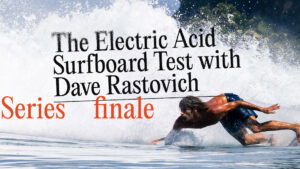The Five Deadliest Waves In The World
Let’s consult the death toll.
Given the level of lunacy these days, it’s hard to fathom why more surfers don’t die. It’s great they don’t, but watching a body get catapulted at Cape Fear, hammered at Jaws, or driven into the rocks at Shipsterns we’re immediately left wondering how the fuck they survived? Nature’s a freaky business. But every so often there are casualties, and when they come they’re heartbreaking and tragic. Looking back at the historical record, if you want to surf late into life, you should avoid these five spots.
1. Pipeline, Hawaii
The data is irrefutable. Pipeline has killed more surfers than anywhere. Since 1989 it has taken the lives of seven surfers, and threatened the lives of countless others. Most recently, Florida’s Evan Geiselman, almost paid the ultimate price there. In December 2015 he hit the bottom and went unconscious before bodyboarder Andre Botha heroically pulled him to the surface and began resuscitation. Joel Parkinson hit the bottom and blacked out the year prior. Ask anybody that charges Pipe regularly and they’ll have their own near-death story. The list of deceased includes Andy Chuda (March 25, 1989), Travis Mussleman (March 20, 2000), Moto Watanabe (January 19, 2004), Malik Joyeux (December 2, 2005), Jon Mozo (February 9, 2005), Joshua Nakata (March 16, 2008) and Joaquin Velilla (January 12, 2007).
2. Teahupoo, Tahiti
Search “surfer deaths at Teahupoo” and the phrase “nearly dies” comes up a lot. Most recently it was Niccolo Porcella that “nearly” died at Chopes. Before that it was Nathan Fletcher on the Code Red Day. “I don’t know how my head didn’t get ripped off,” famously said Nate afterwards. To date there have been more close calls than anyone wants to count, and five recorded deaths. The most notable is the 2001 wipeout of local charger Briece Taerea, who was out surfing in the lead-up to the Billabong Pro. He got sucked over the falls while trying to duck dive a 12-footer, he was driven into the reef where he broke his back in three places and was knocked into a coma. He succumbed to his injuries two days later. It stands as one of the most violent surf-related deaths on this list.
3. Puerto Escondido, Mexico
Ron Cassidy in 2007, Noel Robinson in 2011, then Jay Adams in 2014, Puerto Escondido has taken the lives of some good men. The problem of tourists getting washed out to sea and lost was pervasive, but recent improvements in lifeguard protection have had a profound impact at Playa Zicatela, but that doesn’t make the wave any more safe on its heaviest days. “I don’t know how I didn’t die out there,” Mark Healey pondering after catching a giant left out there last year. During the recent Puerto Escondido Challenge Makua Rothman pulled into a dark, sandy pit and came up with a lung full of foam. He was forced to the beach where it took him a long time to recover.
4. Waimea Bay, Hawaii
In 1943 the surf world was put on notice of just how dangerous big-wave surfing is when Dickie Cross disappeared at Waimea. On December 22, Cross and Woody Brown attempted to paddle out at Sunset Beach when a strong northwest swell quickly began filling in. With each set growing larger, the two paddled two and half miles down to Waimea to try and make it to the beach there. Brown made it, Cross did not. His body was never found. It would be years before anyone tempted fate out there again. In 1995 Waimea took the life of California’s Donnie Solomon, a fatality that hit New School guys like Kelly Slater, Shane Dorian and Todd Chesser close to to home. Most recently, on October 29, 2015, eccentric big-wave personality Alec “Ace” Coole paddled out at Waimea and disappeared. The search for his body was eventually called off days later.
5. Maverick’s, California
Time and again Maverick’s has given the big-wave community reason to pause and reconsider. The 1994 death of Mark Foo made news around the world and quickly put Mavs on the map for all the wrong reasons. Its infamy was renewed in 2011 when Sion Milosky drowned. Cold and ominous, the Half Moon Bay heavy-water spot also almost took the life of aspiring charger Jacob Trette in 2012, and in 2011 Hollywood leading man Gerard Butler suffered a two-wave hold down during the filming of the Jay Moriarity bio-pic. It was a horrendous wipeout at Mavs that inspired Shane Dorian to develop the inflatable life vest so commonly worn by big-wave riders today. “It changed everything in my life, the way I approach everything,” said Dorian.














Comments
Comments are a Stab Premium feature. Gotta join to talk shop.
Already a member? Sign In
Want to join? Sign Up